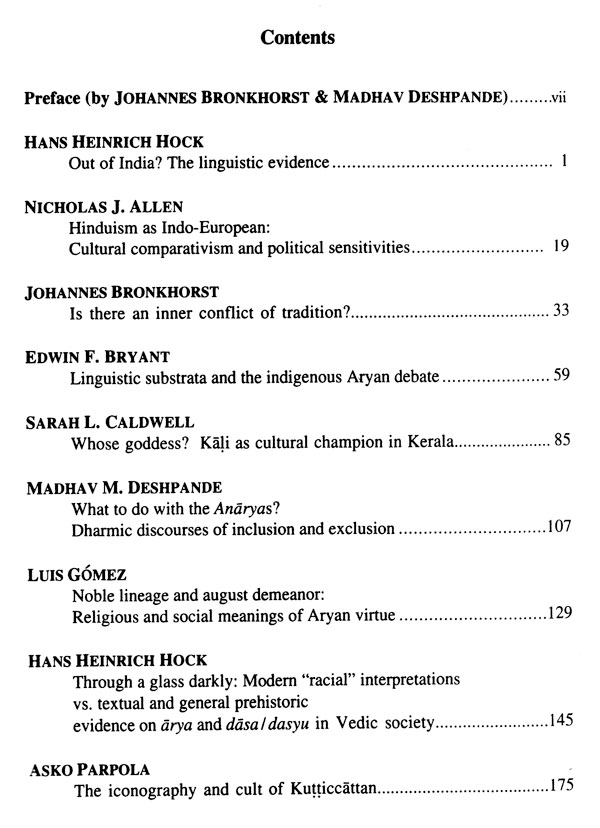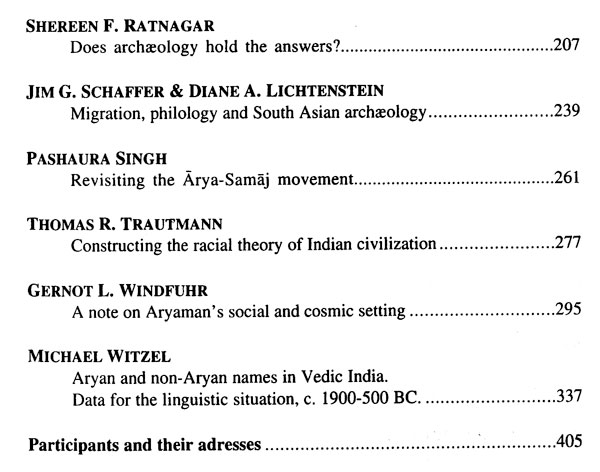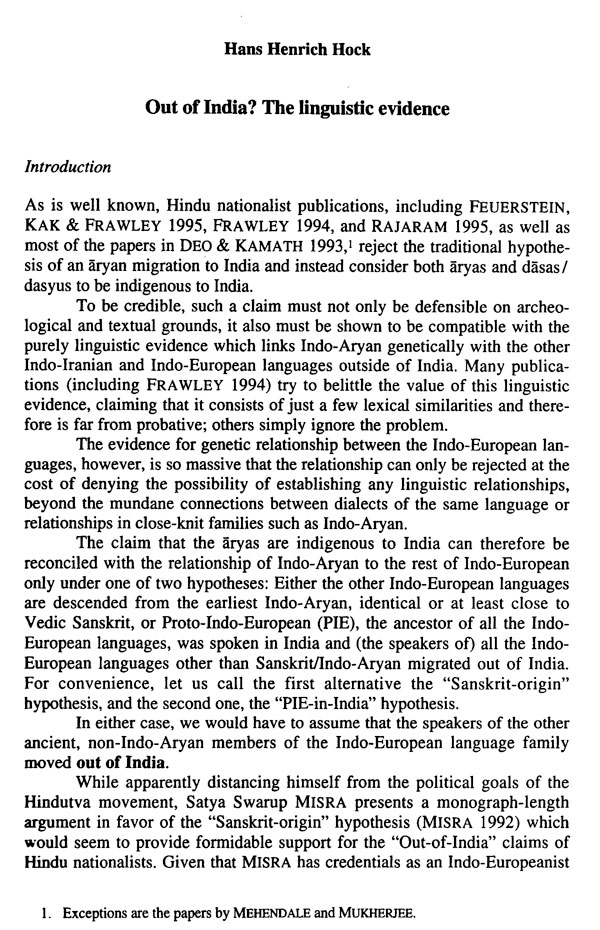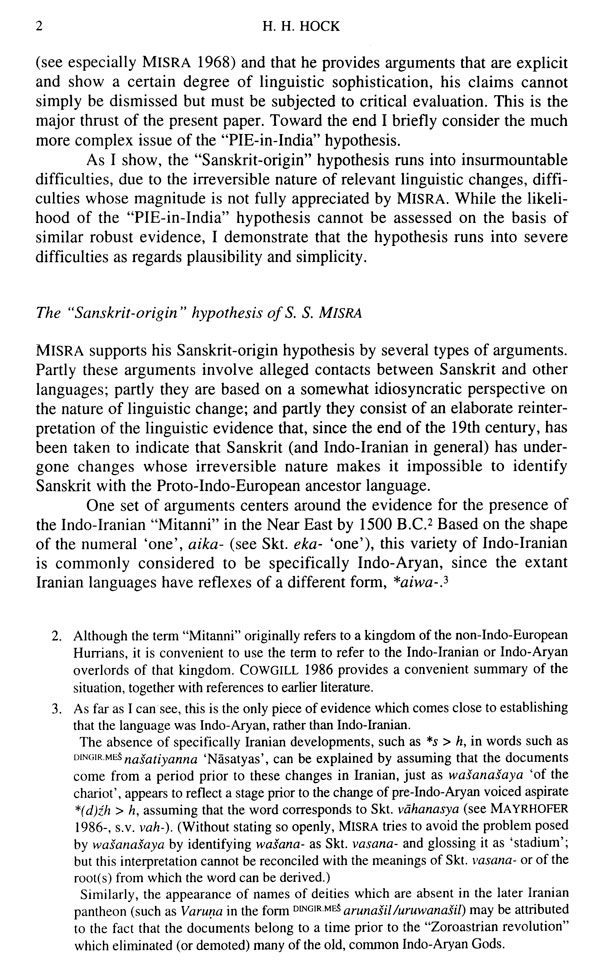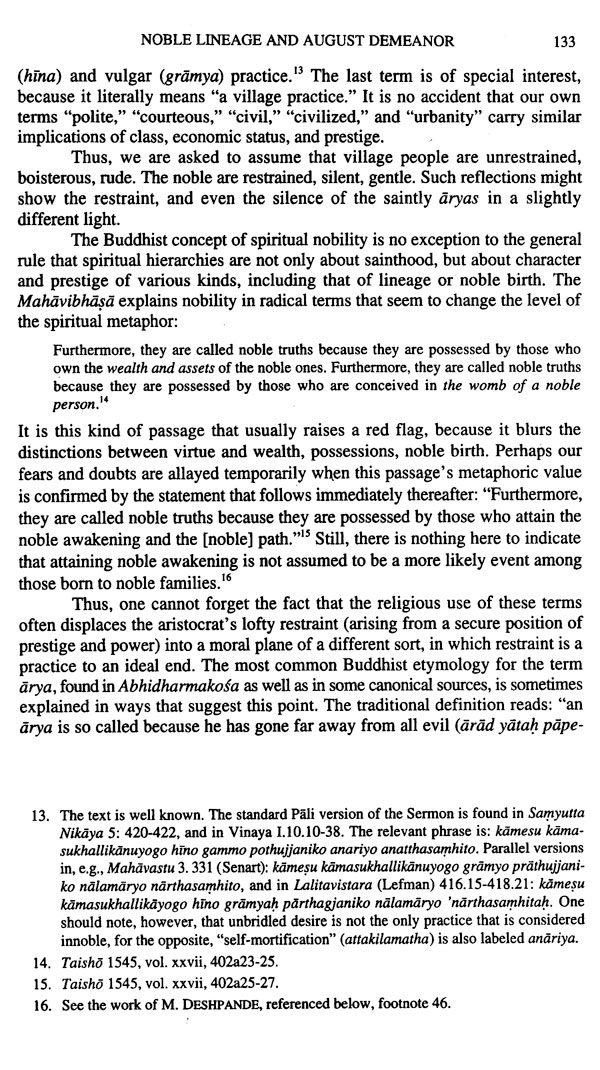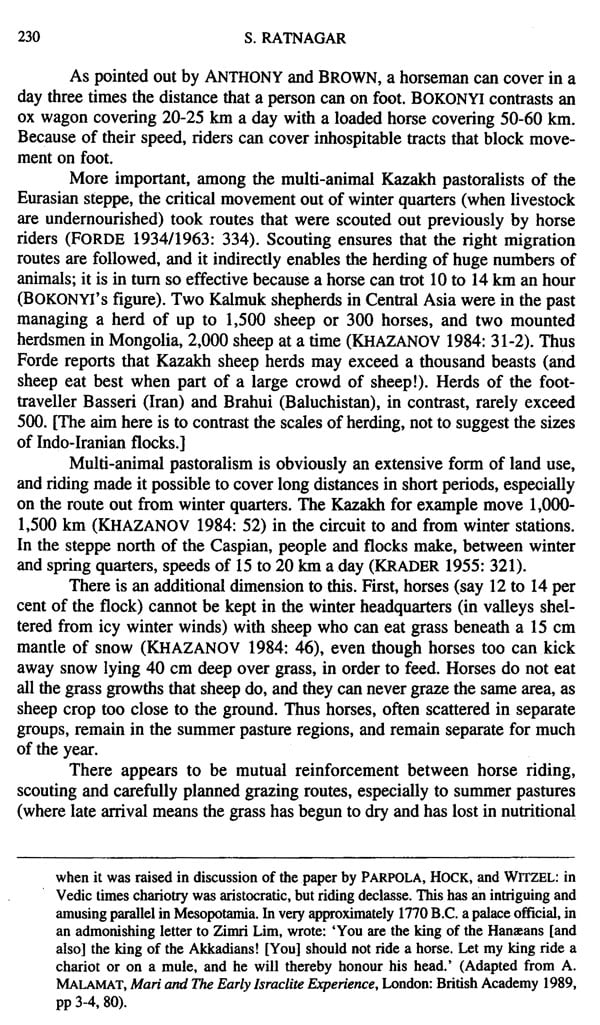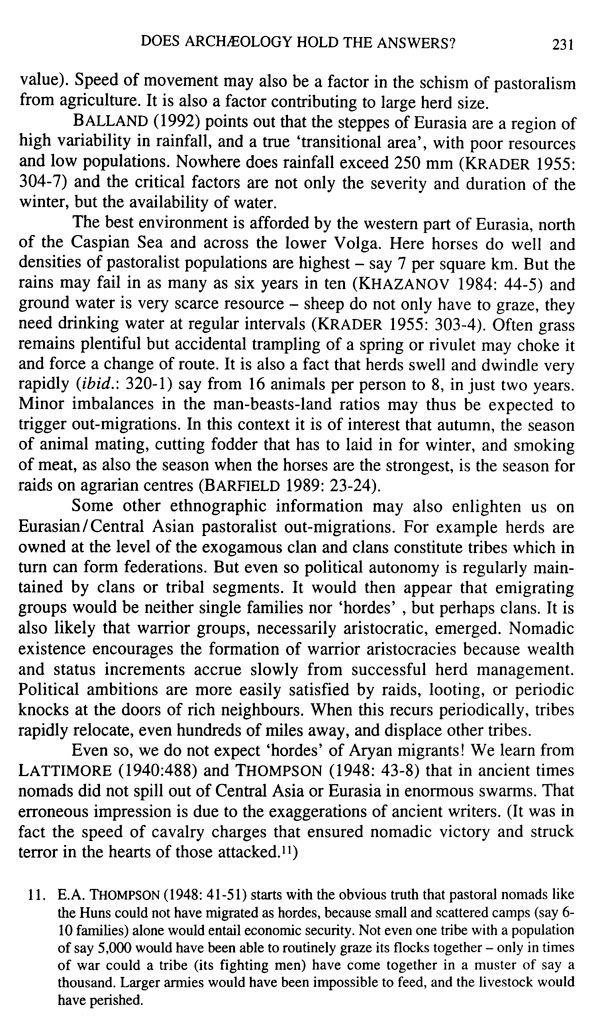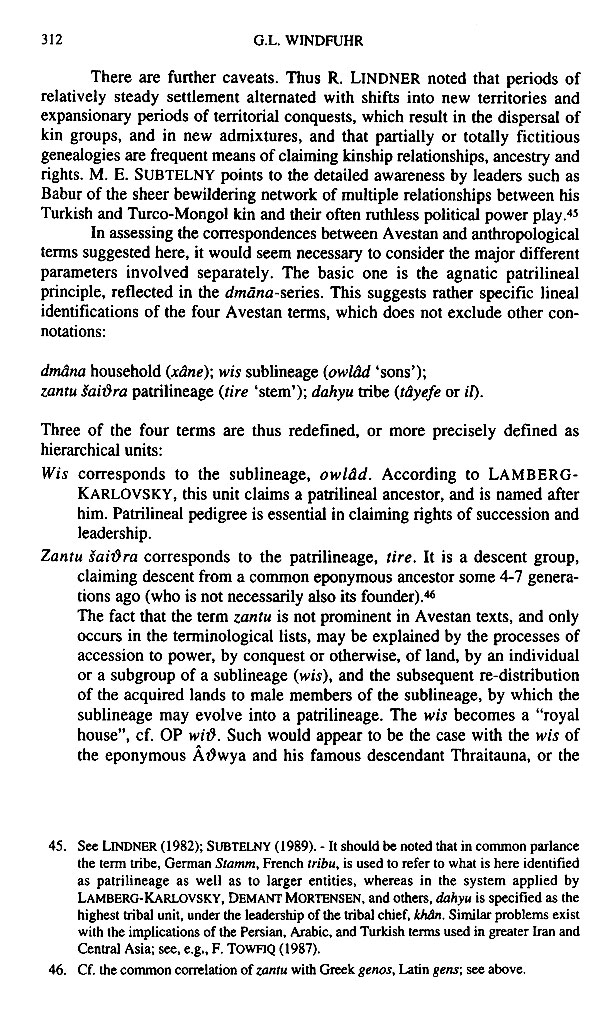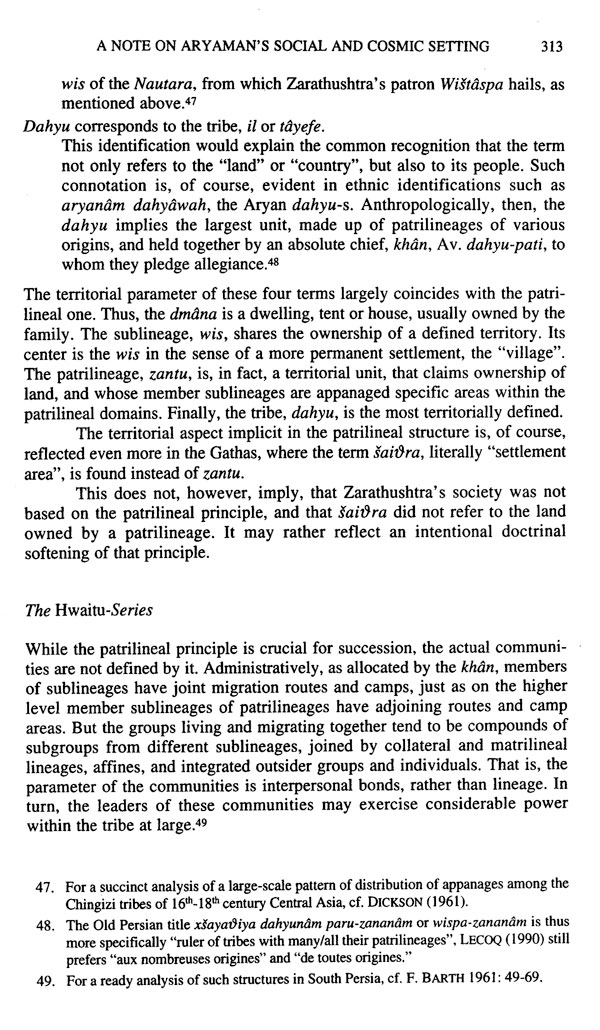
Aryan and Non-Aryan in South Asia (Evidence, Interpretation and Ideology)
Book Specification
| Item Code: | NAZ852 |
| Author: | Johannes Bronkhorst and Madhav M. Deshpande |
| Publisher: | Manohar Publishers and Distributors |
| Language: | English |
| Edition: | 2012 |
| ISBN: | 9788173049187 |
| Pages: | 420 |
| Cover: | HARDCOVER |
| Other Details | 10.00 X 6.30 inch |
| Weight | 870 gm |
Book Description
The volume deals with the history of the concept of Arya and Aryans in East and West, with the linguistic, textual and archaeological evidence in South Asia and beyond.
The terms Aryan and Non-Aryan, corresponding to Sanskrit Arya and an Arya, can readily be shown that among the literary traditions indigenous to South Asia have always evoked strong responses, both positive and negative, as they continue to do even today; but it can also be shown that while they designate a boundary that is in some sense an ethnic one in the Veda, in other literatures the distinction has a religious or moral character.
There have been reconsiderations and reinterpretations of the terms within and outside of the academy. There is on the one hand the established view of a migration of Aryans into South Asia; on the other hand there are new voices calling the whole endeavor fanciful, motivated by colonialism, "Orientalism", nationalism, or something else. What is startling is that the criticism of the status quo comes from completely different directions.
Johannes Bronkhorst is Professor of Sanskrit and Indian Studies at the University of Lausanne, Switzerland.
Madhav M. Deshpande is Professor in the Department of Asian Languages and Cultures, University of Michigan, USA.
The terms Aryan and Non-Aryan, corresponding to Sanskrit arya and an arya, have had a notorious career in the modern world as foundational concepts for racist thinking. How have they operated in South Asia? So far from being foundational, the Aryan /Non-Aryan distinction is unstable and various in its referents, historically contingent and socially constructed. It can readily be shown that among the literary traditions indigenous to South Asia the terms have always evoked strong responses, positive and negative, as they do today; but it can also be shown that while they designate a boundary that is in some sense an ethnic one in the Veda, in other literatures the distinction has a religious or moral character. The Orientalist scholarship of the last two centuries has given new and various constructions to the received Aryan / Non-Aryan distinction(s), constructions which have linguistic, racial, historical or even art-historical referents. Recently there have been reconsiderations and reinterpretations of the terms within and outside of the academy. There is on the one hand the established view of a migration of Aryans into South Asia: on the other hand there are new voices calling the whole endeavor fanciful, motivated by colonialism, "Orientalism", nationalism, or something else. What is startling is that the criticism of the status quo comes from completely different directions. In South Asia the terms have also played a significant role in the recent growth of a politics of religious nationalism, and the recon-structions of South Asian history that goes with it.
Since the time seemed ripe of a collective re-examination of the Aryan/Non-Aryan distinction, it was decided to organize a conference, under the joint auspices of the Universities of Michigan and Lausanne. (An earlier conference of this kind, the first Michigan conference on "Aryan and Non-Aryan in India" was held at Ann Arbor in December 1976, and its proceed-ings, edited by Madhav Deshpande and Peter Hook, were published in 1979 from Ann Arbor in the series: Michigan Papers on South and Southeast Asia, No. 14, Center for South and Southeast Asian Studies, The University of Michigan.) For such a re-examination to move discussion forward, rather than around well-trodden paths, it has to fulfil certain conditions. First, it has to examine the distinction in all its spheres of reference: ancient literature and history, the Orientalist scholarship of the last two centuries, and contemporary South Asian politics. Second, it has to treat the issue as simultaneously one of substance, one of the genealogy of ideas, and one of the politics of knowledge. The time is past when it can be treated as a substantive question as to the "facts" in isolation from historical and political "overtones". But equally the time has now come when the substantive content of knowledge on this question has to be engaged seriously and non-dismissively. For in any imaginable future the terms Aryan and Non-Aryan are likely to persist, and cannot be wished out of existence. Therefore, to be truly helpful scholars need to join in an effort of informed reconstruction, and not be content with an act of deconstruction under the illusion that criticism of texts can make things in the real world go away. The conference "Aryan and Non-Aryan in South Asia: evidence, interpretations, ideologies" invited participation in that effort.
Book’s Content and Sample Pages